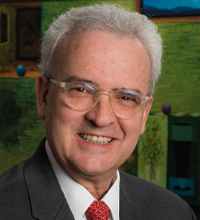
View this edition in our enhanced digital edition format with supporting visual insight and information.
This week, we are pleased to share a case study that demonstrates how effective corporate and family governance can help clarify decision-making protocols in family enterprises. Thanks to Roberto Vainrub for sharing this case with practical implications for advisors.
A frequent business discussion in any company revolves around dividend distribution vis-à-vis reinvestment—a discussion that gets even more complicated in the family business. Typically, those family member shareholders who work in the company (E-S) are biased for reinvestment, while those shareholders that do not work for the company (NE-S) are generally inclined towards more dividends and less reinvestment.
One way to avoid or minimize these situations is to have clearly defined corporate and family governance.
A Case Study: The Villa Family / The Villa Corporation
The current situation
In this disguised case, a decision was made to purchase a very expensive piece of machinery. For the company’s E-S, it was clear that this business decision was in their hands. Due to the price tag, the NE-S disagreed and believed that it was too costly an investment for the company at this time. Moreover, the NE-S believed that this decision would compromise the dividend policy and increase the level of debt. E-S, however, were completely convinced that this investment would bring the company to a higher level and that it was the industry standard for best in class.
In the background of this discussion was a decision that Villa Corp. had made to acquire an operation outside of Mexico. After more than seven years, that operation was still neither growing nor profitable. Meanwhile the business situation in Mexico had grown more complex and the ever-profitable Villa Mexican Corporation became much less so.
Background
In this case, the company is a Mexican family business in metal mechanics, with four generations of Villas involved in the business. Great-grandfather Celestino Villa founded the company with a partner around 80 years ago. As time passed, Celestino bought out his partner and brought in his eldest son, Celestino II, into the company. Eventually, Celestino II bought out his siblings, since he was the only one of the siblings working in the company. This action did not cause any family issues since the other siblings were working outside the company and doing well.
Twenty years later, things started to get tough in the country, cash was scarce, lines of credit were exhausted, and Celestino II passed away suddenly at a relatively young age.
At the time of his death, Celestino II had four children: Pancho (21), Celestino III (18), Lupita (15), and Pedrito (12). His wife Lupe was a strong woman and considered the Chief Emotional Officer and center of the family. After her husband’s death, Lupe asked Pancho, who was about to graduate from college, and Celestino III, who was starting college, to complete their studies and, as much as possible, to work for the family business at the same time.
Pancho became the company’s de facto CEO and started to bring important innovations to the business, but he continued to struggle with the cash flow. Celestino became Pancho’s right hand person and took care of operations. Pancho and Celestino soon found that some of the former employees were not as loyal as they had thought, so in addition to the burdens of managing the company, the brothers had to take on additional tasks as they let certain key employees go.
As time passed, Lupita and Pedrito also began to work for the family business. They both held key positions and were excellent executives. The four siblings had the same equity ownership but different executive compensations based on their job descriptions. Villa Metals became one of Mexico’s top industrial companies. The younger siblings always recognized the leadership of the elder brothers and attributed a good part of the company’s success to Celestino III and Pancho.
Before he was in his fifties, Pedrito retired from the day-to-day company tasks, but Pancho, Celestino III, and Lupita continued to work in the company. At this point, the board of directors consisted of a majority of independent directors in addition to Pancho as the company CEO and Celestino III as an owning family member of the board. It was agreed that an outside advisor was needed to help navigate the journey of establishing a family constitution, family governance structures, and family reunions. It is worth noting that at the same time, some members of G4, including Celestino IV, started to work for the company. Their presence was most likely a catalyst for establishing more formal governance procedures.
Regarding the Expensive Equipment, Whose Decision is it?
To clarify the current decision-making process and pave the way for other scenarios beyond the purchase of the expensive equipment, which would undoubtedly be coming, the Villa company, as noted, decided to hire an outside advisor. Here is what the advisor, in consultation with the board, recommended to the shareholders:
- Clearly define the family and corporate governance rules, including which decisions fall to whom. Since it is impossible to foresee every situation, guidelines and culture should prevail in cases not specifically addressed. Decisions that both the board and the family shareholders should approve:
- Choosing the CEO
- Selling the company or a part of it. However, there are many caveats. For example, what if one of the shareholders does not want to sell out of pure emotional connection with tradition and not based on a thorough business analysis? Another possibility is that as the family and ownership expands, the probability of having members that would like to sell grows over time. These issues should be addressed in the family protocol.
- Selling key assets, such as the brand
- Exceeding a certain amount of debt and/or of a large new investment (define amounts to be revised periodically)
- Establishing a dividend policy
- Approving the board’s performance, financial statements, and major new projects, such as establishing operations in a new company or a new country
- In general, an open and in-depth discussion is recommended to define and to delineate what types of decisions fall exclusively within the family scope.
So, what happened?
Both shareholders and board of directors agreed to purchase the equipment, provided that an alternative source of financing would be found. In the end, the company that sold them the equipment was able to provide direct credit that proved to be a sound financial solution. In the next family council this point was brought to the agenda, lessons learned from this experience were incorporated in the investment guidelines, and all were parties were satisfied with the outcome.
As highlighted in the definition of family and corporate governance rules, if a limit had been set on the amount spent on investment the state-of-the-art equipment, no discussion would have been needed. In any case, a protocol cannot foresee each and every scenario, thus the recommendation is to establish a family investment committee where this type of decision would be contemplated. In addition, best business practices call for conducting feasibility studies when the amounts involved are substantial.
Many of the most profitable companies in the world are family businesses, but when things go south, without good communication and understanding, both the company and the family might be destroyed.
About the Contributor

Roberto Vainrub, PhD, CFWA, ACFWA, is President of Evolution Wealth Advisors LLC, a portfolio manager, and a client advisor with over 25 years of experience in the financial industry. Roberto has a teaching career spanning for over 30 years in several institutions in both Venezuela and the United States. He is former Managing Director of FPCM and Grupo Activalores and is a former board member of Mercantil Commercebank Florida. He is currently a member of the board of directors of Mercantil Servicios Financieros and Mercantil Banco Universal, and director of Farmatodo Colombia and Spain. Roberto, born in Caracas, Venezuela, has been living in the United States since 2011.

View this edition in our enhanced digital edition format with supporting visual insight and information.





